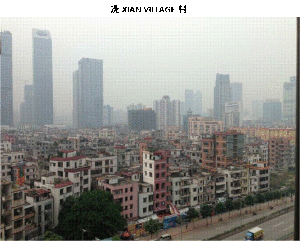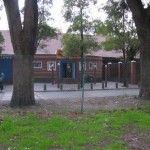Xuefei Ren – Urban Design And Inequality: The Case Of Urban Villages In China’s Megacities
No comments yet citiespapers.ssrc.org, July 2014. I would like to discuss some of the major planning and design challenges over redeveloping informal settlements in China’s megacities. Specifically, I will focus on the settlement type of the “urban village,” which is commonly found in cities in the Pearl River Delta in southern China, where migrant workers rent rooms from farmers- turned-landlords and form their enclaves. Guangzhou, the capital city of Guangdong province, has one of the largest numbers of migrant urban villages. The city government has recently identified 138 of such settlements and some of them have been “successfully redeveloped,” as claimed by the government. However, to date, the “successful” redevelopment approach in Guangzhou has been to demolish all existing structures and build high-rise apartment towers instead. Some of the apartment units are distributed to villagers to compensate their loss and the rest is sold on the market for a profit. A better planning and policy solution is needed to redevelop these urban villages that are vital to the survival of migrant workers in China’s large cities.
citiespapers.ssrc.org, July 2014. I would like to discuss some of the major planning and design challenges over redeveloping informal settlements in China’s megacities. Specifically, I will focus on the settlement type of the “urban village,” which is commonly found in cities in the Pearl River Delta in southern China, where migrant workers rent rooms from farmers- turned-landlords and form their enclaves. Guangzhou, the capital city of Guangdong province, has one of the largest numbers of migrant urban villages. The city government has recently identified 138 of such settlements and some of them have been “successfully redeveloped,” as claimed by the government. However, to date, the “successful” redevelopment approach in Guangzhou has been to demolish all existing structures and build high-rise apartment towers instead. Some of the apartment units are distributed to villagers to compensate their loss and the rest is sold on the market for a profit. A better planning and policy solution is needed to redevelop these urban villages that are vital to the survival of migrant workers in China’s large cities.
The redevelopment of urban villages is a highly contentious process, involving constant negotiations over compensation between developers and villagers/lease holders, and this is often mediated by the local government. But, whatever the compensation terms might be, migrant tenants are always the victims of the redevelopment. Without any title to either the land or the housing structures, they are simply forced out once their urban village is slated for “redevelopment.” The current approach of demolishing the old and building new is costly, in both economic and social terms. The local government does not have sufficient funds for compensation and construction, and therefore, redevelopment is left to private developers. Moreover, redevelopment pushes migrant workers further away from the city, thus causing a shortage in the labor market. In most cases, migrant tenants have to start all over again, move to a more remote location, and form a new enclave—until their new home is “redeveloped” again.
You May Also Like
Comments
Leave a Reply






